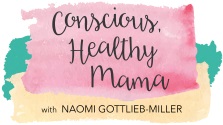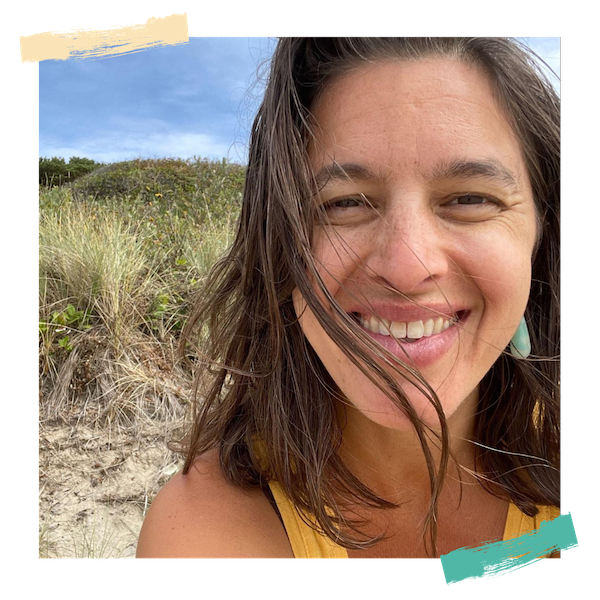I started practicing yoga when I was about 18 years old.
I’d just moved to New York City and was a freshman in college. I loved being in New York – the energy of the city, the diversity, and the big-ness of it were all so incredibly exciting.
It also started to wear on me. My body started to hurt. I was exhausted by school and exploring the city and drinking gross beer. I told my parents about all of this (well, minus the gross beer part) and they suggested yoga. They’d been going to classes for a little while and were hooked. Even though I wasn’t so keen on doing what my parents were doing, I figured I’d give it a shot.
I took my first class in a huge apartment on St. Marks Place that had been converted into a yoga space. It also had a few living spaces separated by plywood boards where actual people lived when yoga classes weren’t happening. It was a little odd but the classes were cheap, the teacher was ok, and I could walk there easily from my dorm. After the first class, I too, was hooked.
I started going twice a week. I started doing random yoga poses in my dorm room. Eventually, I had some major realizations while lying on the floor in that yoga class that changed my life. Feeling my heart beat through my shirt onto the floor, I realized I had a problem and I needed to find my way back to healthy. It didn’t happen immediately, but I slowly started taking better care of myself.
A few years later, I found a new studio and an even better teacher who inspired me to become a yoga teacher. Flash forward 15 years and I’m still at it, getting on my mat daily and teaching yoga online, as well as off.
I didn’t want to do yoga at first because it seemed so “woo woo” and also my parents liked it. I’m really glad I tried it anyway, because I can honestly say that yoga has changed my life.
Over the years I’ve heard all of the reasons why people won’t do yoga or why they don’t like yoga, even if they’ve never tried it.
Here are my top 4 things people get wrong about yoga:
1. “I can’t do yoga because I’m not flexible.”
This one comes up the most for me. Usually it will be in casual conversation. Someone will ask me what I do and I’ll say, “I’m a yoga teacher.”
Sometimes I get a single eyebrow raise; sometimes I get both. If the person I’m chatting with doesn’t do yoga, often they’ll say, “I don’t do yoga because I’m just not flexible enough.”
Good news: you don’t have to be! In fact, one of the primary reasons that people decide to do yoga is because they can no longer touch their toes without hurting their backs or bending their knees.
If your excuse for not going to yoga is that you’re not flexible enough it’s sort of like saying that your reason for not going to a swimming class is because you don’t know how to swim.
2. “Yoga is all about relaxation and being calm and I just can’t get into that headspace.” Or “Yoga is so boring. You don’t really do anything.”
Have you ever heard of power yoga? Prana flow? Ashtanga? Yoga isn’t all about any one specific way of moving or being. Often the vibe of yoga class is determined by the style of yoga that is being taught and the teacher who is teaching that specific class.
Some types of yoga are more dynamic, active, and energetic. Other types of yoga are more relaxing, mellow, and calming.
Similarly, some teachers are known for being more upbeat, intense, and commanding, while others are known for being more quiet, reverent, and passive.
Some teachers are known for reciting poetry at the beginning of class, while others are known for referencing Star Trek episodes.
If the only classes you’ve ever gone to are more relaxing and slow-paced and you don’t enjoy them, find another type of class and another teacher.
There are only 2 things that connect every single style of yoga.
The first is intentional movement and more specifically, movement guided by your breath. If the movement isn’t intentional and you’re not moving using your breath as a guide, it’s probably not yoga.
The second is that the whole purpose of yoga is to increase your consciousness and expand your awareness. That sounds a little vague, but the idea here is that when you begin to increase your consciousness, you start to see the world beyond yourself. You start to see your place within everything. You begin to see that your actions matter and what you do makes a ripple effect in the world.
The word “yoga” comes from the sanskrit word “yuj”, which is often translated to mean “union,” but that’s not quite accurate. The word “yuj” actually means “to yoke” – as into hitch a cart to a horse.
So it’s more connection than union.
Additionally, I like the idea of connecting 2 things together that are otherwise just fine as they are, but once they are connected, transformation occurs. In the case of the horse and cart, when they are yoked together, the horse can pull the cart, making it even easier for someone to transport things from one place to another.
Yoga cannot be defined by being relaxing or boring or super challenging. But yoga can be defined by how it transforms you. When you hitch the actions of your body to the thoughts of your mind and the desires of your heart, you can create some powerful change in your life and in the world.
That’s what I’m interested in and that’s why if you’ve tried one class and it didn’t work out, try a few more until you find one that you love.
3. “Yoga is a religion and I already have one.”
This is a misunderstanding and not true.
Yoga in of itself is not a religious practice, especially not in the way it’s evolved in the west.
Hinduism is a religion and while there is some philosophical crossover at times, there is no religious crossover.
Some styles of yoga are more spiritual but none will ask you to pray to their gods or reject your religion in favor of yoga.
If the idea of chanting “OM” at the beginning or end of a yoga class bothers you, guess what? You don’t have to do it!
In case you’re curious about why we OM in yoga, generally teachers chant OM at the beginning and end of their yoga classes to create a sense of cohesiveness – to bring everyone together and create a connection. Remember one of the primary purposes of almost every style of yoga is to create connection – the idea that we are not all that different or separate from one another, but instead that if nothing else, we can share in the harmony of our own voices. It’s a powerful action.
4. “I don’t have time to do yoga.”
You don’t need a lot of time to do yoga. Yes, if you are going to a yoga class at a yoga studio, the classes are generally 60 -90 minutes long and that is a bit more of a time commitment.
All you really need is a few minutes to move your body.
Here’s a quick 6 minute practice I created just for you that will stretch you out and twist you and make you feel pretty awesome. You can do this while you’re waiting for water to boil on the stove or when you’re on hold with the cable company.
Yes, going to long extended practices are amazing, but if the only thing that’s holding you back from doing yoga is that you don’t have the time, aim for shorter sweeter pockets of yoga. 5 minutes of yoga is better than no yoga.
Can you come up with any other reasons why you can’t do yoga?
I dare you to come up with a reason that isn’t listed here. If you give me a reason why you can’t, I’ll come up with a way you can.
Spend some time on your mat with me, without actually leaving your house! Join my upcoming online yoga series, beginning on Monday October 30th. The classes are recorded live and intended for all levels (modifications will be offered). Once the class is held, the recording will be sent to you so that you can enjoy it forever and always whenever you need a little yoga boost!
Join by Monday October 23rd and get a bonus class from me as your gift for signing up and committing some valuable time for yourself on your mat!


